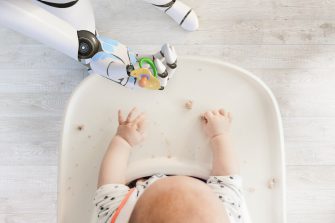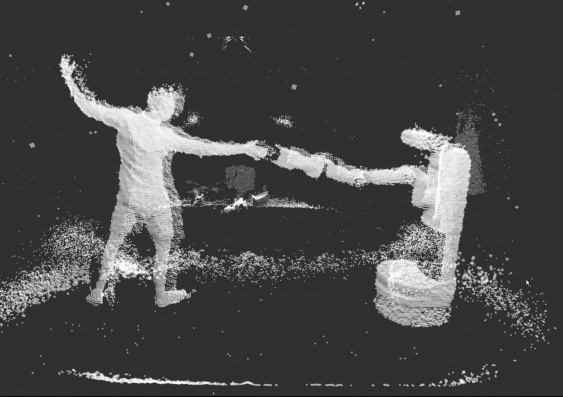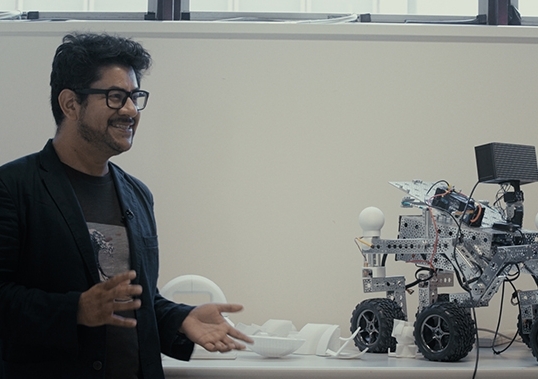Bringing up baby - now with robots
2024-04-22T09:06:00+10:00

Photo: Getty Images
More and more children are growing up with robots at home, but their impact on early learning and development is still largely unknown and unregulated.
Technology has a profound impact on children.
From the humble pencil to the touch-screen tablet, the information that infants absorb from these tools shapes their behaviour and development. As young humans take in the world around them and learn by observing, interacting and imitating, their survival lies in the hands of carers and companions.
For the generation of kids born today, a companion might be at home that none of their parents grew up with: robots.
This emerging reality, in which infants and children routinely interact with all manner of robotic devices, presents complex challenges for which few people seem prepared. It is a new frontier – socially, legally and ethically.
Human-robot interactions
Domestic robots are becoming increasingly common, performing tasks such as cleaning, cooking, entertaining, even gardening. Robotic pets can mimic the behaviour of real furry friends, without the same need for care and feeding. The integration of AI actually makes them trainable.
Likewise, service robots are appearing in public spaces such as restaurants, shops and airports, deployed as servers, cleaners, guides or baristas.
In public and in private, humans are active and unpredictable participants in human-robot interaction, and there are no established standards for this novel technology.
Human-robot interaction is still a field of exploratory research, and robot manufacturers are still looking for strategies to guide effective human-robot interaction in broad and complex scenarios.
Within this largely uncharted realm, ‘robot natives’ occupy a special place.
Digital devices vs robot natives
In just the last decades, more and more kids have routinely grown up exposed to digital devices – smart phones, tablets and the like. The assumption is that these so-called digital natives develop a sense of how things work in the digital realm, and quickly master them in a way their parents never could.
Robot natives are different.
Children exposed to robots from their earliest days will develop a natural interaction closer to how humans relate to each other in everyday life – with verbal interaction, non-verbal communication, sharing of physical space and many other social activities.
These interactions can offer a rich complexity, with unexpected consequences –something far beyond the essentially one-way relationship between a child and a digital device.
But research into very young children’s interaction with robots is challenging. Early exploration into the topic and anecdotal evidence point to an urgent need to understand the impact of robots on infants and their development of social, cognitive and physical skills.
Designing a commercial robot
A range of research can be found on the topic of child-robot interaction: robots used to boost new ideas and stimulate children’s creativity, social robots assessing children’s emotional states (by analysing psycho-physiological signals), tracking children’s perceptions of robots, the use of humanoid robots and storytelling as a therapeutic tool for children with autism, the design of huggable robots for pediatric care, and the use of the Ultimatum Game to analyse child-robot interaction.
For baby-robot interaction, there are only a few studies out there, including using robots to encourage infant leg-motion training via reward learning and imitation, and the use of thermal infrared imaging to assess autonomic response in babies during interaction with a robot and an avatar.
And there are efforts to design and test a telepresence robot for interacting with babies and toddlers, for use by other members of the family, such as grandparents.
However, moving from this exploratory research to producing a commercial robot requires a multidisciplinary approach to design, and regulations to minimise the potential adverse impact of robot technologies on children and infants.
Proper guidelines are urgent, as technical, educational and social issues should be addressed before these service and social robots become widespread, standard technology.
One easy fix, for example, is the noise level of robots around babies at home, which manufacturers can do relatively quickly.
However, more complex scenarios, such as how robots verbally and physically interact with babies and toddlers, raise questions about how such interactions might affect children cognitively and socially.
Potential impact
Research pointing to the negative impact of screen time on children’s language development, for example, shows the unexpected potential for harm in new technologies.
Privacy is another major consideration. Cameras and sensors are essential elements in robots navigating human environments, and they enable the collection of detailed information about their surroundings. This raises questions about how to manage the privacy of young children interacting with them and how to establish clear ethical and legal boundaries.
In March 2024, the European Union endorsed the AI Act, which addresses unacceptable uses of AI, such as behavioural manipulation. While the legislation is directed at the use of AI, much of it could apply to robots, which are essentially computers capable of interacting with the real world.
Voice-activated toys encouraging dangerous behaviour in children is one scenario the Act explicitly cites as an unacceptable risk. Verbal interaction with robots should be treated in the same way, so that families and kids are kept safe around robots capable of social interaction.
Biometric identification and facial recognition are also features that can generate data for social scoring and other kinds of classification of humans based on behaviour, socioeconomic status or personal characteristics (ethnicity, nationality, disability, etc.) when robots navigate continuously around children and adults.
Timely legislation and interaction design guidelines will go a long way to avoiding a dystopian future for robotic natives.
A handbook on human-robot interaction to be published in June 2024 lays out some essential considerations for the design of safe, transparent, traceable, non-discriminatory robots for infants and children:
- Follow a human-centred design methodology, with extensive testing before commercial release.
- Develop a robust virtuous philosophy behind robot design via multidisciplinary discussion and validation – putting robot usability in a proper context involving all potential uses, tasks and environments in which infants and children might interact with the robot.
- Avoid techno-solutionist approaches. The convenience of using robots must be balanced with cultivating our humanity and the humanity of babies. There is not a machine, app or device for every human need.
- The role of parents cannot be taken over by a robot. Essential human-to-human interaction is the basis for cognitive, social and emotional development.
- Cooperation is key. Government, industry and academics need to work together, drawing on empirical evidence, to create regulations for healthy, sustainable and ethical baby-robot interactions.
Compared to building regular service robots for more mundane tasks, responsibly designing robots for infants and children will take much greater investments of time and money. However, the impacts of previous interactive technologies on young humans have provided important lessons about unintended consequences. A new reality is coming, and robot natives deserve a future with well-designed and safe robots.
Dr Eduardo Benítez Sandoval is a Scientia Lecturer in the Faculty of Arts, Design and Architecture at UNSW Sydney, associated with the Creative Robotics Lab. His work spans various aspects of social robotics, such as reciprocity in human-robot interaction, robots and education, robots and healthcare, and addiction to robots, among other topics. He is the co-author of ‘Robot natives: future design and regulations for baby robot interaction’, to be published in June 2024 in The Cambridge Handbook of the Law, Policy, and Regulation for Human–Robot Interaction.
The research was undertaken with financial assistance from the UNSW Scientia Development Package.
Originally published under Creative Commons by 360info™.






